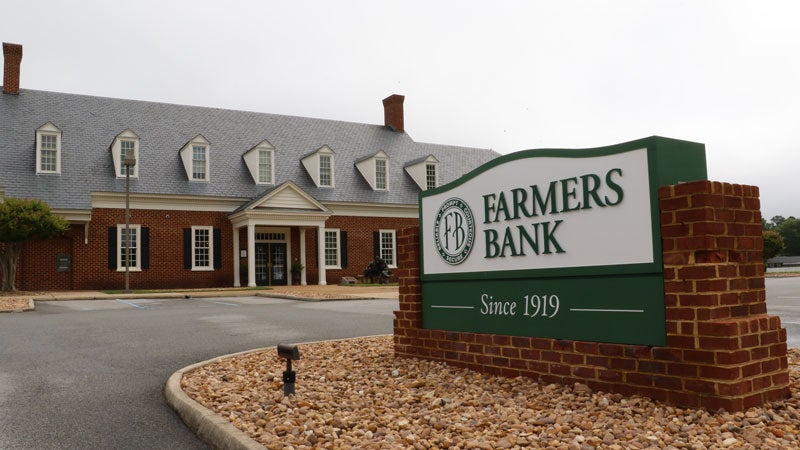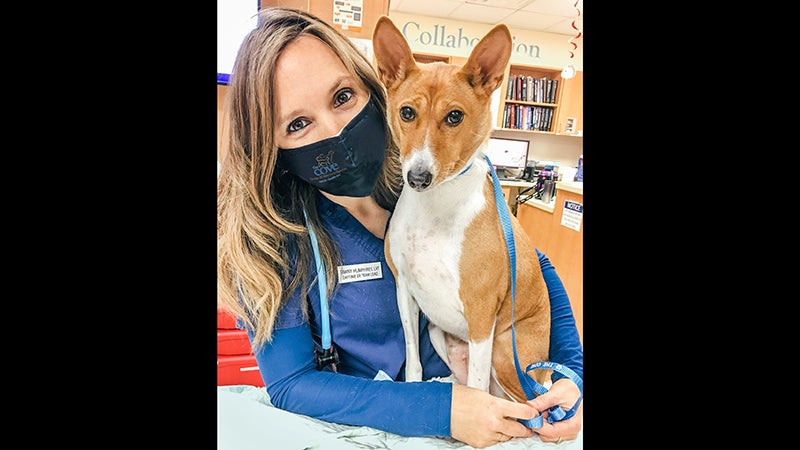Horsing around the right way
Published 10:15 pm Thursday, June 21, 2018

- Elizabeth Leonard, 15, guides 11-year-old Mocachee with steady hands and easygoing steps during her Wednesday riding lesson at Serenity Oasis Farm in Suffolk.
Elizabeth Leonard, 15, started on groundwork with big, brown Mocachee in the heat and sweat of late Wednesday afternoon. The 900-or-so pound horse casually trotted alongside Elizabeth before he was ready for some under-saddle training.
Horseback and in motion, Elizabeth was given instructions by her teacher, Hannah Carey. The young student adjusted her posture and was mindful of the tightness in her ankles and thighs. Carey followed the pair of them in boots dusted by sand and dirt while Mocachee went between short and long strides at Elizabeth’s suggestion.
“At first I was kind of nervous,” Elizabeth said. “It was only my second time riding him. But after a few minutes I calmed down a bit and it got much easier. (Mocachee) was still a lot calmer than I was.”
The horse was named by the owner of the Blue Horse Mukwa Equine Retirement and Rescue Center of Virginia, where Carey found him. His name means “dog” in the rescue owner’s Native American language, and as Elizabeth gave directions through her own body language, the big “dog” licked and chewed his mouth.
“Now he’s thinking about it,” Carey said with the sun gleaming down and her student riding Mocachee in a tight pattern. “That’s how they signal. Whatever she’s changed, he felt it.”
Carey has co-owned and operated Serenity Oasis Farm: Holistic Education Center at the 9.5-acre property on Manning Road with her husband and co-owner, Brandon Carey, for a year. They have three horses in the stable: Mocachee, a Haflinger horse named Aeneas and Mercutio, Carey’s Welsh pony-thoroughbred crossbreed and poster child for rehabilitation.
Serenity Oasis Farm offers lessons for students and educational workshops and clinics for the public. There are about six students that regularly train at the farm, with more expected to sign up thanks to word of mouth and social media. But Hannah admitted that she prefers quality over quantity.
“I like to keep things small, and even when I work lessons I don’t do more than two or three riders at a time, because I want everyone to get that individualized attention,” she said. “We also want to keep a low-stress, relaxed environment.”
She has 18 years of experience with a background in classical dressage and natural horsemanship. She spent 14 years volunteering and working in the industry at various farms and facilities, including the rescue where she found Mocachee.
She earned her certification to become a Centered Riding Instructor in Virginia Beach in May 2017 and also completed a four-week Parelli Master Class in natural horsemanship in Florida in 2009. Founded by Sally Swift, Centered Riding focuses on tools to improve the balance and effectiveness of riders through body awareness.
“She pulled a lot of stuff from different martial arts techniques to make people aware of their anatomy and body mechanics,” Carey said. “All of that comes together to help riders be more in harmony with their horses.”
Controlled breathing allows riders to be calm and share that ease with their horses. Riders are taught to recognize tension in their own legs and torso to ease tension in their saddleback partners. Carey said a lot of “bad behavior” in horses is simply done because of that transmitted tension.
Elizabeth travels to Serenity Oasis Farm from Gates County, N.C., and is part of the farm’s working student program for teens that want to experience all aspects of horsemanship. She’s been riding horses since she was 8 years old and has already felt progress in her first month with Carey, both on Mocachee’s back and with her own horses, Cody and Blue.
“Her instructions are very clear, so I know what she’s talking about,” Elizabeth said after her Wednesday afternoon lesson. “She corrects stuff that I didn’t even know I was doing, which helps a lot.”
Carey doesn’t use equipment that restricts the horse’s body or prevents the horse from providing feedback. When horses pin their ears back, extend their necks and try to buck off riders, they’re really just trying to communicate.
“It’s a dynamic relationship, and it’s always changing,” Carey said.
When Carey rescued Mercutio, his balance was incredibly stunted, likely because he was restricted by the neck or head, she said. That takes away a horse’s natural balance and creates incredible tension in the horse’s body. Her horse has slowly regained that balance over time, if not 100 percent.
“A lot of people just don’t know,” Carey said. “They’re not bad people and they’re not trying to hurt their horses. They just don’t know.”
Carey and her husband hold educational workshops throughout the year to address common horsemanship mistakes like picking ill-fitted equipment, especially saddles.
“It’s not like buying a car, where you go and just pick the one you like,” Brandon Carey said. “You’re not just buying something to fit only you, it has to fit the horse, too. You want to make sure that it works for both of you when you’re in motion.”
Hannah Carey wants to train riders who want to work with their horses, not dominate them — riders who want to learn accountability for their own actions so that they fine-tune their habits and build better relationships with their animals. She said this also helps you become a more patient, open and communicative person out of the saddle, as well.
“It takes some personal growth to go, ‘OK, what are you trying to tell me and what does that say about me,’” Carey said. “That’s hard, but to me that’s what makes them so incredible. They make you better in things that don’t have anything to do with horses.”
Email serenityoasisfarm@gmail.com or call 803-3974 for more information.






